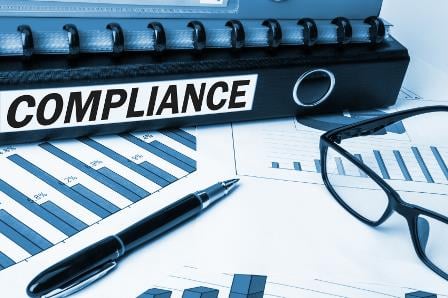How can HR professionals improve the ever-changing compliance requirements their organization must abide by?
In an article for Forbes Magazine, members of the US-based Forbes Human Resources Council put their heads together to come up with a list of ways HR professionals can potentially help prepare their company for future challenges and encourage the widespread uptake of compliance issues amongst all staff. Their tips are relevant for all HR professionals, regardless of geographic location.
These nine top HR executives also discuss how businesses can better respond to compliance missteps in the organization.
1 Process and education
According to LeRae Jacob of Creative Door, HR departments must always outline compliance requirements, develop processes and educate the organization about the importance of compliance.
With the proper tools and appropriate education, HR can prepare an organization to respond to any compliance issue that arises.
2 Simplicity
There are numerous compliance challenges, says Dale Albrecht of Alonos, and he is amazed at how few organizations have written processes or even simple checklists.
“Simply having a process can ensure that you'll address 90% (or more) of the compliance items, which reduces your risk of missteps substantially.”
3 Proper vetting
“A common misstep or challenge with compliance is not benchmarking and properly vetting the process change or compliance step with others outside your organization, in addition to all stakeholders,” according to
Philip Dana of
Bridgepoint Education.
“But taking this extra step allows a 360-degree approach to the questions that may help you rethink and reshape the compliance piece in order to best achieve the business outcomes.”
4 Risk assessment and centralized solutions
Bridgette Wilder of
Media Fusion says employers face the challenge of myriad complex compliance requirements which may involve financial output to capture required data or to pay for mandatory benefits.
To be prepared to respond effectively, she recommends a three-pronged approach: 1) Assess the risks for each compliance area; 2) Identify and centralize resources and standard operating procedures to manage those risks; and 3) Document due diligence.
5 Balance
HR has a tough job, having to manage all issues associated with state and government employment regulation, and at the same time making the company a great place to work, says
Rick Devine of
TalentSky, Inc.
“Great companies respect the rules, while at the same time creating initiatives for career engagement, motivation and excitement. Leaning too much one way or the other is not good. Balance is the key.”
6 Freedom of speech vs. protecting employer brand
“A common compliance challenge is the conflict between freedom of speech and social media posts that harm a company’s brand,” says
John Feldmann of
Insperity.
“When employees voice controversial opinions online, it can appear as if they’re representing their employer’s views, which can result in negative backlash and lead to possible termination. Companies should have a clear social media policy that is introduced during onboarding.”
7 Keep comprehensive records
Managers who think it takes up too much time keeping employee records, writing out incident reports or spelling out company policies in fine detail could end up wasting more time in cleaning up missing or conflicting information down the road, says
Angela Nguyen of the
Ad Exchange Group.
“Reserve time to think about and prevent every worst-case scenario so you don't end up with a discrimination lawsuit or labor law fine.”
8 Use less concrete language
Tiffany Servatius of
Scott's Marketplace says hot-button compliance words are commonly used without a full understanding of how detrimental those can be if they are used against the business later on. Words such as "harassment" and "retaliation" are often used too loosely, she added.
“Businesses should reference specific company policies when correcting employee actions and be careful of using phrases that could cause even more issues down the road.”
9 Align employee goals with compliance standards
Employers must ensure that employees see their role in compliance. When employees do not understand the relevance, compliance will not be a priority, according to
John Mauck of
WLR Automotive Group.
“Aligning job responsibilities and goals with compliance standards will help create the necessary relevance. More importantly, point out the benefits of maintaining consistency to employees, and encourage participation in the setting of goals.”

